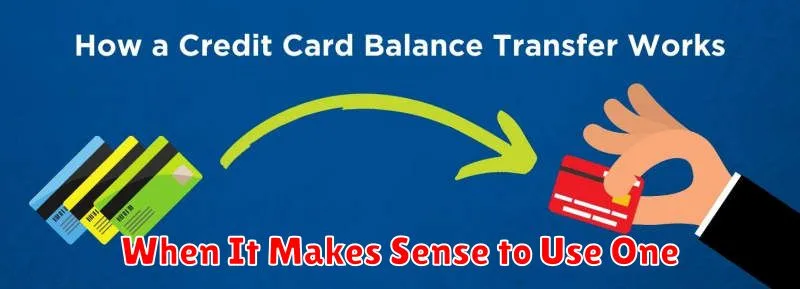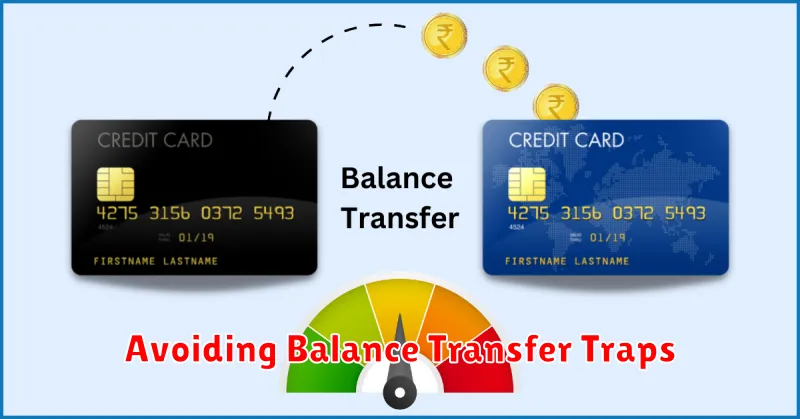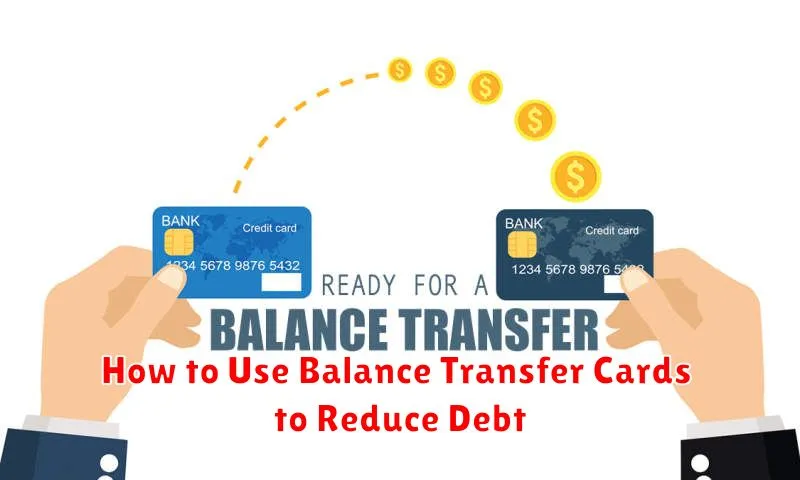Are you struggling with high-interest credit card debt? A balance transfer card can be a powerful tool to help you regain control of your finances and significantly reduce the amount you owe. By transferring your existing balances to a card with a 0% introductory APR, you can effectively freeze interest accrual for a specific period, allowing you to focus on paying down the principal balance faster. This guide will explain how balance transfer cards work, the key factors to consider when choosing one, and how to use them strategically to maximize your debt reduction efforts. Learn how to leverage the benefits of a balance transfer and finally break free from the cycle of high-interest debt.
Balance transfer cards offer a valuable opportunity to save money on interest payments and accelerate your journey towards becoming debt-free. This article will provide a comprehensive overview of the balance transfer process, including how to qualify for a balance transfer card, understanding the associated fees, and avoiding common pitfalls. Discover how to strategically utilize 0% APR periods, manage multiple balance transfers, and create a realistic repayment plan to minimize your debt and achieve your financial goals. Take the first step towards financial freedom by learning how to effectively use balance transfer cards to your advantage.
What Is a Balance Transfer Card?
A balance transfer card is a type of credit card that allows you to transfer existing debt from other credit cards or high-interest loans onto a new card with a lower interest rate. This can be a helpful tool for managing debt and potentially saving money on interest payments. The key feature of a balance transfer card is an introductory 0% APR period, typically lasting between 12 and 21 months. During this time, you won’t accrue any interest on the transferred balance, giving you an opportunity to focus on paying down the principal.
It’s important to understand the terms and conditions before applying for a balance transfer card. Most cards charge a balance transfer fee, typically around 3-5% of the amount transferred. Additionally, the 0% APR is temporary. After the introductory period ends, the interest rate reverts to a standard purchase APR, which can be relatively high. Therefore, it’s crucial to have a plan to pay off the transferred balance before the introductory period expires to maximize your savings and avoid accruing additional interest.
Successfully utilizing a balance transfer requires careful planning and discipline. Avoid making new purchases on the card during the introductory period, as these may be subject to the standard purchase APR. Focus solely on paying down the transferred balance as aggressively as possible. Additionally, be aware of the credit limit on the new card and ensure it can accommodate the entire balance you wish to transfer. Factor in the balance transfer fee when calculating the total amount you’ll need to transfer. Finally, make sure you can comfortably afford the monthly payments required to eliminate the debt before the 0% APR period ends.
When It Makes Sense to Use One

Using “one” as a pronoun is appropriate when you want to avoid repeating a singular, countable noun that has already been mentioned. It creates a sense of formality and conciseness while maintaining clarity. For example, if you’ve just discussed the benefits of a particular fruit, you could then say, “One can find this fruit at most grocery stores,” instead of repeating the fruit’s name. This usage is especially useful in technical writing or when discussing abstract concepts where repetition can become cumbersome. It’s important to ensure the antecedent is clear to avoid ambiguity.
The pronoun “one” can also be used to refer to a general or hypothetical person, often in a formal context. Phrases like “One should always be prepared” or “One might assume” are examples of this usage. This creates a sense of detachment and objectivity, particularly suitable for making general observations or providing instructions. While less common in informal speech, this usage remains grammatically correct and adds a level of sophistication to writing.
However, overuse of “one” can sound overly formal or even stilted, especially in casual conversation. In such situations, using synonyms or rephrasing the sentence can be more effective. Consider your audience and the overall tone of your writing when deciding whether to use “one.” In less formal writing, using “it,” “you,” or “they” might be more appropriate. It is crucial to ensure that the antecedent of the pronoun is crystal clear, regardless of which pronoun is used.
How to Find the Best Offers
Finding the best offers requires a proactive approach. Start by clearly defining your needs and setting a budget. This will help you avoid impulse purchases and focus on items that truly provide value. Comparison shopping is crucial. Utilize online resources, browser extensions, and visit multiple retailers to compare prices and features. Don’t forget to factor in shipping costs and any applicable taxes.
Timing is essential for maximizing savings. Be aware of major sales events like Black Friday, Cyber Monday, and seasonal clearances. Subscribing to email lists and following retailers on social media can alert you to upcoming promotions. Consider using coupon websites and cashback programs for additional discounts. Look for price matching policies, which allow you to get the lowest price from competing retailers.
Read the fine print. A seemingly great deal might have hidden restrictions or limitations. Pay close attention to return policies, warranty information, and any exclusions that may apply. Be wary of deals that seem too good to be true, as they often are. By being informed and prepared, you can confidently navigate the world of offers and secure the best value for your money.
Reading the Fine Print
Contracts, agreements, and even product labels often contain crucial information hidden within the fine print. It is essential to thoroughly review this information before signing any document or making a purchase. Failure to do so can result in unexpected fees, unwanted subscriptions, or agreeing to terms and conditions that are not in your best interest. Take your time and pay close attention to details regarding payment schedules, cancellation policies, and any limitations or exclusions.
Understanding the fine print involves more than just reading the words; it requires comprehension. Look for key terms such as “automatic renewal,” “early termination fees,” and “limitations of liability.” If any language is confusing or unclear, seek clarification. Don’t hesitate to ask questions or consult with a legal professional if necessary. Protecting yourself from potentially unfavorable terms is worth the effort.
Developing the habit of scrutinizing the fine print is a valuable skill that can save you time, money, and potential headaches in the long run. Make it a practice to carefully examine any document before you sign it, regardless of how small the print may seem. This diligence can help you avoid unforeseen complications and ensure you are fully aware of the terms you are agreeing to.
Avoiding Balance Transfer Traps

Balance transfers can seem like a great way to save money on high-interest credit card debt. By moving your balance to a card with a 0% introductory APR, you can potentially save hundreds or even thousands of dollars in interest. However, there are some traps to watch out for that can negate the benefits and leave you in worse shape financially. One crucial aspect is the duration of the 0% APR period. While enticing, these periods are finite. Be sure you understand exactly how long the introductory period lasts and create a realistic plan to pay off your balance before it expires and the regular, often much higher, APR kicks in. Hidden fees are another common pitfall. Many balance transfer cards charge a balance transfer fee, typically 3-5% of the amount transferred. Factor this fee into your calculations to ensure the savings from the lower interest rate outweigh the cost of the transfer.
Another important consideration is your credit score. Balance transfers can temporarily lower your credit score, especially if you open multiple new accounts in a short period. Additionally, failing to make on-time payments on your new balance transfer card can further damage your credit. Maintaining a healthy credit utilization ratio is also key. Transferring a large balance to a new card with a low credit limit can increase your utilization ratio, which can negatively impact your score. Aim to keep your credit utilization below 30% to minimize the impact.
Finally, avoid the trap of accumulating new debt. A balance transfer can provide breathing room, but it’s not a solution if you continue to rack up debt on your other cards. Focus on responsible spending habits and create a budget to ensure you’re managing your finances effectively. A balance transfer is a tool that can help you get out of debt, but it’s only effective if used wisely.
Tips to Pay Off Before Promo Ends
Don’t miss out on saving money! Paying off your promotional balance before the period expires is crucial to avoid accruing interest charges. Understand the terms and conditions of your promotion, including the expiration date and any potential penalties. Setting up payment reminders can be extremely helpful in ensuring timely payment.
Create a budget to allocate funds specifically for paying off the promotional balance. Consider cutting back on non-essential expenses or finding ways to increase your income temporarily. Even small, consistent payments can make a significant difference in reducing the overall amount owed. Prioritize this payment to maximize your savings and avoid future debt.
If you anticipate difficulty paying off the full balance before the deadline, contact the lender immediately. They may be able to offer alternative payment arrangements or provide guidance on managing your account. Proactive communication is key to avoiding negative consequences and maintaining a good financial standing.
Alternatives If You Don’t Qualify
If you don’t meet the specific requirements for a particular program, loan, or opportunity, don’t give up. There are often alternative paths you can explore. Start by carefully reviewing the reasons for your ineligibility. Understanding the specific areas where you fall short can help you identify suitable alternatives. For example, if your credit score is too low, you might focus on improving your credit before reapplying. If you lack a certain skill or qualification, consider pursuing relevant training or education.
Research similar programs with different eligibility criteria. Many organizations offer multiple programs with varying requirements, and one might be a better fit for your current situation. Also, consider looking into programs offered by different institutions or agencies. For instance, if you don’t qualify for a federal loan, explore options with private lenders or state-specific programs.
Finally, don’t hesitate to seek guidance from a professional advisor or counselor. They can provide personalized advice based on your circumstances and help you identify resources and opportunities you might have overlooked. They can also assist with developing a plan to address any deficiencies that prevented you from qualifying initially.
Impact on Credit Score
Paying off debt generally has a positive impact on your credit score. It reduces your credit utilization ratio (the amount of credit you’re using compared to your total available credit), which is a significant factor in calculating your score. Lowering your utilization demonstrates responsible credit management and can lead to a score increase.
However, closing credit card accounts after paying them off can sometimes have a negative, albeit often temporary, impact. It reduces your overall available credit, which can temporarily increase your utilization ratio if you have balances on other cards. Closing older accounts can also shorten your credit history, another factor that influences your credit score.
While paying off debt is crucial, consider the potential impact on your credit score before closing accounts. If you’re concerned about the effect on your utilization ratio, keep the accounts open and use them sparingly, making small purchases and paying them off in full each month. This demonstrates responsible credit management without significantly impacting your available credit.

